Personal finance website WalletHub just published a new report ranking the 48 contiguous states on home energy efficiency. This report comes during a year when American households have seen energy use soar during the pandemic, with many individuals staying home to avoid infection. WalletHub found that on average, U.S households historically spent at least $2,000 per year on utilities, costs that will likely increase for 2020. Some states fare better in terms of energy efficiency than others. Among the top five states in home energy efficiency: Utah, Minnesota, New York, Colorado, and Wisconsin. The five states at the bottom of the list in terms of energy efficiency are Alabama (44), Georgia (45), Tennessee (46), Louisiana (47), and South Carolina (48).
Details »Insulation Institute Blog
Today marks the 5th Annual Energy Efficiency Day (#EEDay2020), established by advocate groups around the United States to highlight the benefits of energy efficiency (for a full list, see here). Hundreds of companies, organizations, utilities, and governments representing tens of millions of people will take part in #EEDay2020 by encouraging Americans to support energy efficiency efforts, which save money, cut pollution, create jobs, and much more. Among the most important activities to undertake to increase energy efficiency is to insulate. Here are three facts about insulation and energy efficiency:
Details »As lumber costs skyrocket across the country, driven by strong homebuilding numbers and residential and commercial renovation projects, cost containment measures become more important for home builders. One effective way to reduce lumber use is advanced framing and it comes with the added benefits of optimized energy efficiency and structural integrity. Yet the shift from traditional to advanced framing can be daunting for some because change is hard. Getting started with online training that focuses on incremental shifts in construction practices that are part of advanced framing techniques may ease the learning curve.
Details »Taking Performance to a Whole New Level
North American Passive House Network last month named Ken Levenson, co-founder of 475 Performance, as its new Executive Director. Levenson, an architect by trade, is a longtime advocate of building science and an
Details »The U.S. Environmental Protection Agency (EPA) Energy Star program is set to conduct its annual “Rule Your Attic” promotional campaign beginning next month. The campaign educates consumers about the importance of air sealing and insulation by encouraging homeowners to measure their attic insulation and add more if needed.
Details »Would it surprise you to learn that among the top 10 reasons cited for a failing a final new residential home inspection is missing insulation in the attic access or floor? Improperly installed insulation is an inconvenient problem that can be fixed relatively easily, but insulation that’s completely missing on a final inspection can cost additional time and money for the builder. There’s a simple solution to avoiding this: a checklist and quality control review before final inspection.
Details »In real estate, the mantra of top sales professionals is “location, location, location.” While location is of course key, a new report from the American Council on an Energy-Efficient Economy (ACEEE) provides a proof point that increasingly, home energy efficiency can also drive home buying decisions. ACEEE’s research shows that including home energy efficiency scores online in real estate listings would lead buyers to choose a more energy-efficient home with lower energy costs. Home builders and sellers who don’t leverage this information could be missing a key opportunity to demonstrate their value proposition.
Details »Pandemic May Drive Zero Energy Construction
![]() An increasing number of states and municipal governments are considering more stringent energy efficiency goals into their updated building codes. For example, new residential construction in several locales within Colorado must comply with the U.S. Department of Energy’s Zero Energy Ready Home program. While Colorado may be on the leading edge, states that have targeted carbon reduction are ramping up efforts to move to more stringent building codes. The pandemic may accelerate that activity.
An increasing number of states and municipal governments are considering more stringent energy efficiency goals into their updated building codes. For example, new residential construction in several locales within Colorado must comply with the U.S. Department of Energy’s Zero Energy Ready Home program. While Colorado may be on the leading edge, states that have targeted carbon reduction are ramping up efforts to move to more stringent building codes. The pandemic may accelerate that activity.
Even as the home building industry sees a record surge in sales, it still faces a tough challenge with labor for the foreseeable future. Novel approaches to attracting young people into the trades and efforts like North Carolina Building Performance Association (NCBPA’s) workforce development initiative may ultimately be the catalyst to solving significant workforce challenges. In this third and final of a three-part blog series, we look at why and how state and national organizations can get involved with these initiatives.
Details »









